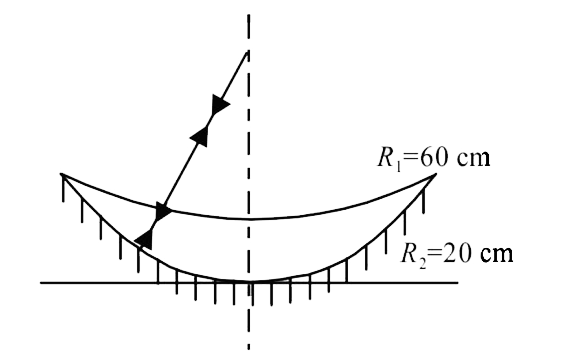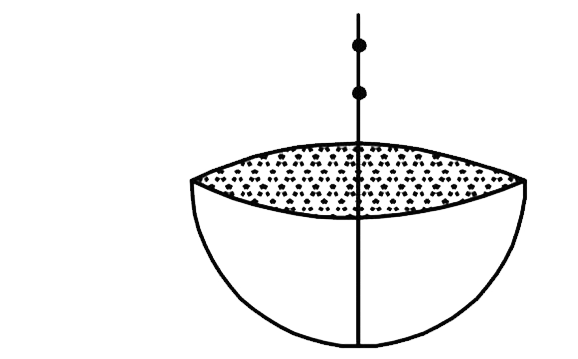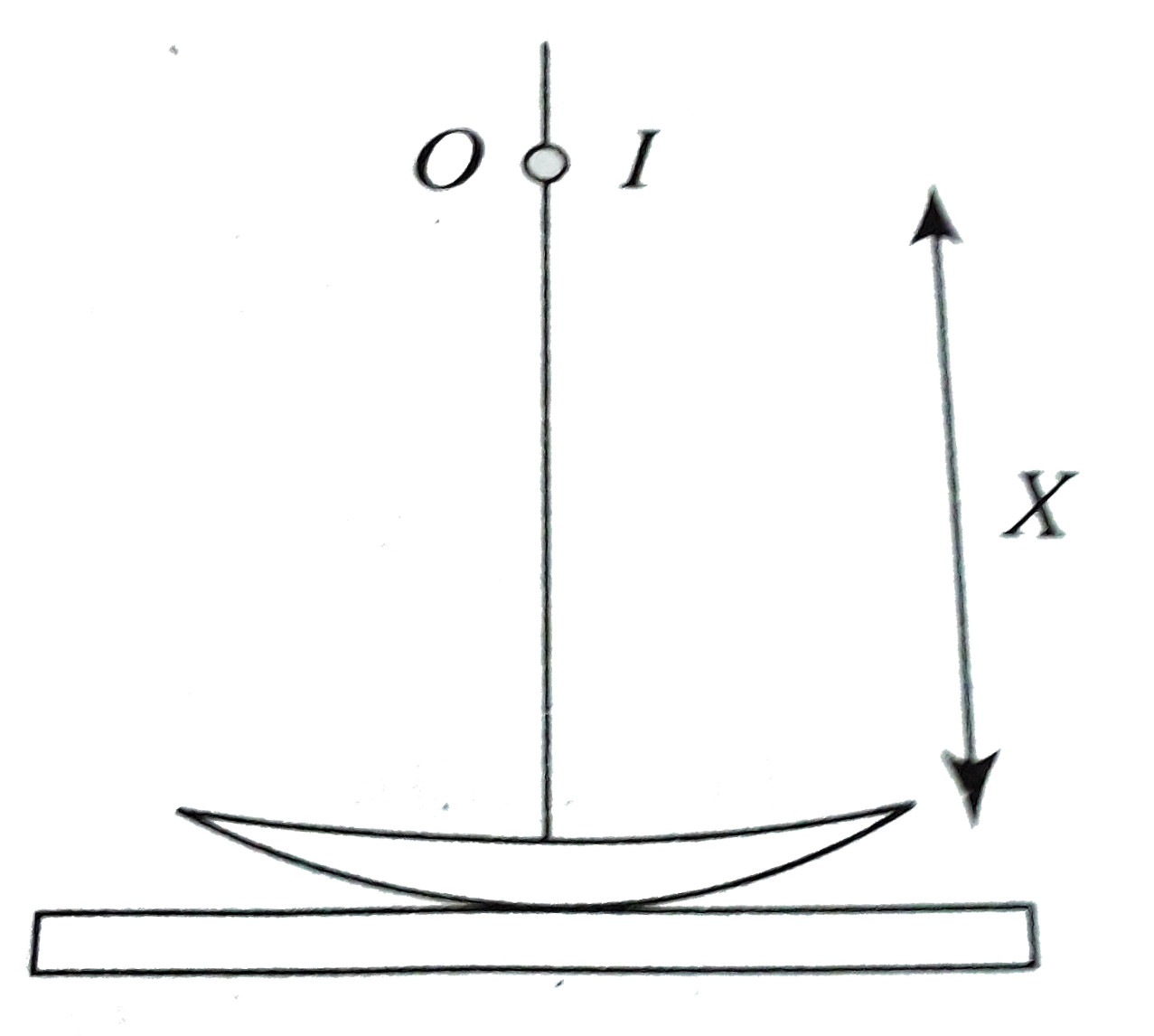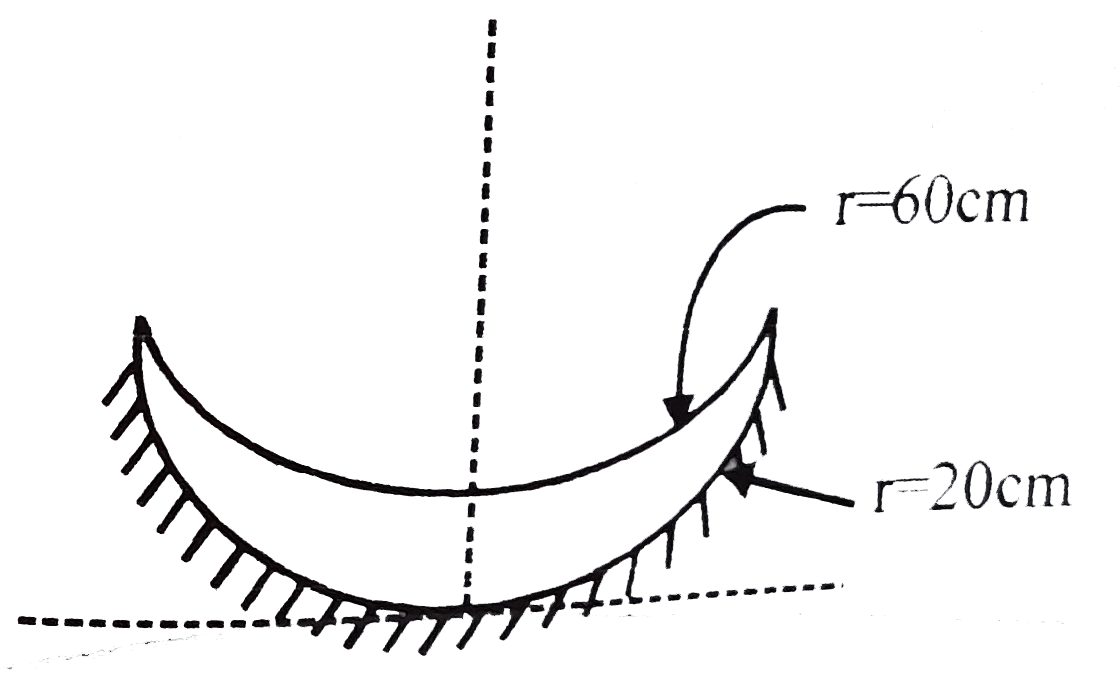The convex surface of a thin concave-convex lens of glass of refractive index 1.5 has a radius of curvature 20 cm. The concave surface has a radius of curvature 60 cm. The convex side is silvered and placed on a horizontal surface as shown in figure. (a) Where should a pin be placed on the axis so that its image is formed at the same place ? (b) If the concave part is filled with water (mu = 4/3), find the distance through which the pin should be moved so that the image of the pin again coincides with the pin.

The correct Answer is:A, B, C

(i) KEY CONCEPT: The given silvered concavo-convex lens behaves leke a mirror whise focal length cabe
calculated by the formula 1f=2f1+1f2
f1=focal length of concave surface.
f2= focal length of concave mirror.
∵1f=2−30+1−10=−430
∵ f=−7.5cm
Using mirror formula
1f=1v+1u⇒1−7.5=1−x+1−x
x=15cm

(ii) Let the object distance be u. When water is poured over the concave surface the apparent object distance will be v then
−μ1u+μ2v=μ2−μ1R
For flat suface R=∞
∵−μ1u+μ2v=0impliesv=uμ2μ1=u×21μ=u×43
Since the ray enters the lens from water into glass
−μwu+μgv=μg−μw−60⇒u=−13.85cm:'Downwardshift=15-13.85=1.15cm.
Topper's Solved these Questions
Similar Questions
The convex surface of a thin concavo-convex lens of glass of R.l. 1.5 has a radius of curvature 20 cm. The concave surface has a radius of curvature 60 cm. The convex side is silvered and placed horizontally.
Q Where should a pin be placed on the axis such that its image is formed on the same point.
View SolutionThe convex surface of a thin concavo-convex lens of glass of R.l. 1.5 has a radius of curvature 20 cm. The concave surface has a radius of curvature 60 cm. The convex side is silvered and placed horizontally.
Q If the concave part is filled with water of refractive index 4/3, find the distance through which the pin should be moved so that the image of the pin again coincides with the pin?

View Solution
Knowledge Check
The convex surface of a thin concaveo-convex lens of glass of refractive index 1.5 has a radius of curvature 20cm. The concave surface has a radius of curvature 60cm. The convex sidei is silvered and placed on a horizontal surface.

Q. Where should a pin be placed on the optice axis such that its image is formed at the same place?Ax=5cmBx=20cmCx=15cmDx=25cmThe concave surface of a thin concavo -convex lens of glass of refractive index1.5has a radius of curvature of 20cm.The concave surface has a radius of curvature of 60cm.The covnex side is silvered and placed on a horizontal surface as shown in the figure.

The combination behaves likeAA concave mirrorBa convex mirrorCa concave mirrorDa convex lensThe concave surface of a thin concavo -convex lens of glass of refractive index1.5has a radius of curvature of 20cm.The concave surface has a radius of curvature of 60cm.The covnex side is silvered and placed on a horizontal surface as shown in the figure.

The focal length of the combibnation has the magnitude.A15cmB8.6cmC7.5cmD1.5cm
The concave surface of a thin concavo -convex lens of glass of refractive index1.5has a radius of curvature of 20cm.The concave surface has a radius of curvature of 60cm.The covnex side is silvered and placed on a horizontal surface as shown in the figure.

A small object is placed on the principal axis of the combination,at a distance of 30cmin front of the mirror.The magnification of the image is
View SolutionA plano-convex lens is made of glass of refractive index 1.5. the radius of curvature of its convex surface is R. its focal length is
View SolutionA plano-convex lens is made of glass of refractive index 1.5. The radius of curvature of its convex surface is R. Its focal length is
View SolutionA plano convex lens is made of glass of refractive index 1.5. The radius of curvature of its convex surface is R. Its focal length is
View SolutionThe concave surface of a thin concavo-convex lens of index1.5has radius of curvature 50cm and10cm respectively.The concave side is silvered andplaced on a horizontal surface as shown

The object distance at which its image coincides with itself is
View Solution

